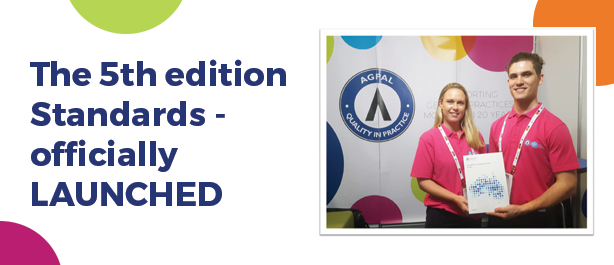Latest news

RACGP Standards for general practices 5th edition – LAUNCHED!
After months of counting down, the RACGP Standards for general practices 5th edition officially launched at the GP17 Conference in Sydney earlier today, Thursday 26 October 2017.
AGPAL gained a unique insight into the application and applicability of the 5th edition Standards by way of our exclusive involvement in the large-scale pilot, and we are proud that the feedback provided by AGPAL practices, AGPAL Surveyors and our staff has contributed to the now final 5th edition Standards. Our team is using this experience and knowledge to develop resources and processes to best support your practice team when you commence your accreditation journey against the 5th edition Standards.
NOTE: Practice teams can commence their assessment against the 5th edition Standards with AGPAL as of Wednesday next week, 1 November 2017; however you also have the choice to continue your assessment against the 4th edition Standards prior to 1 November 2018. After 1 November 2018, all practices undergoing accreditation must be assessed against the 5th edition Standards.
New modular structure
Modules include:
- Module 1: Core Module
- Module 2: QI Module
- Module 3: Other Settings
This new modular structure aims to allow the RACGP to update modules separately and adapt the Standards for other healthcare settings.
Indicators contained within the 5th edition modules are written in a way that places more focus on outcomes and patient-centeredness. This requires practices to focus on the outcome or the intent rather than the process and on what the patient receives rather than the process undertaken by the practice.




